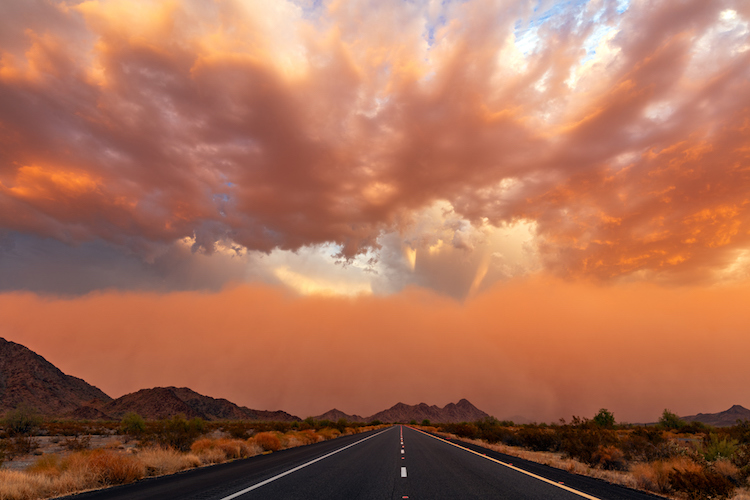- Home
- The Tips & Tricks
- Monsoon’s Arrival A Reminder To Pull Aside, Stay Alive

Monsoon’s Arrival A Reminder To Pull Aside, Stay Alive
It can seemingly happen in an instant: A wall of dust blows across a highway and blinds drivers. Heavy rain then covers the roadway in water. It’s nearly impossible to drive – and surely unsafe.
In a panic, overwhelmed drivers may be unpared to safely navigate the powerful forces of a monsoon storm.
The solution is simple: Pull Aside, Stay Alive.
The official start of the monsoon season is here. The Arizona Department of Transportation has simple tips to help drivers stay safe when summer storms pack dust and heavy rain.
The surest defense when dust storms are brewing is to not drive into one. Yet because storms can form and move quickly, motorists need to know how to act quickly if they find themselves in the thick of a blinding dust. ADOT’s Pull Aside, Stay Alive safety campaign offers these additional tips:
- If in a dust storm, check for traffic around your vehicle and begin slowing down.
- Pull off the roadway as soon as possible – completely, if you can – without waiting for visibility to worsen.
- Turn off your engine.
- Turn off all vehicle lights. Vehicles approaching from behind could use your headlights as a guide and potentially crash into you.
- Take your foot off the brake and set the emergency brake.
- Stay in your vehicle and remain buckled up until the storm passes.
Those who travel Interstate 10 between Phoenix and Tucson should also be aware of ADOT’s dust detection and warning system. Active along a 10-mile corridor between Eloy and Picacho Peak, this automated system can lower the speed limit from the normal 75 mph to as low as 35 mph depending on visibility. The reduced speed limits are enforceable.
The clearly marked corridor includes overhead message boards that feature safety warnings when the system is activated. While the system was designed to help drivers move through the area more safely during dust storms, it does not replace common sense. As is the case anywhere in Arizona where dust storms pop up, drivers should be prepared to pull over even with the additional safety features in the area.
ADOT routinely services the equipment in the corridor for reliability, just as the agency works year-round to maintain more than 55 pump stations along Phoenix-area freeways. Those stations can include up to four pumps driven by powerful engines capable of lifting more than 12,000 gallons of stormwater per minute.
Still, localized storms that drop more than 2 inches of rain per hour can tax any drainage system, and ADOT focuses on having technicians ready to respond if issues occur with any pump stations. If freeway flooding does occur in a low-lying area, avoid driving into the water and wait for emergency responders to provide assistance.
Motorists should also be prepared to slow down any time rain has fallen on freeways or local roadways. Allow extra room between vehicles to provide a safe stopping distance.
More information on dust storm safety is available at PullAsideStayAlive.org, and safety tips for driving in rain storms are posted at azdot.gov/monsoon.
